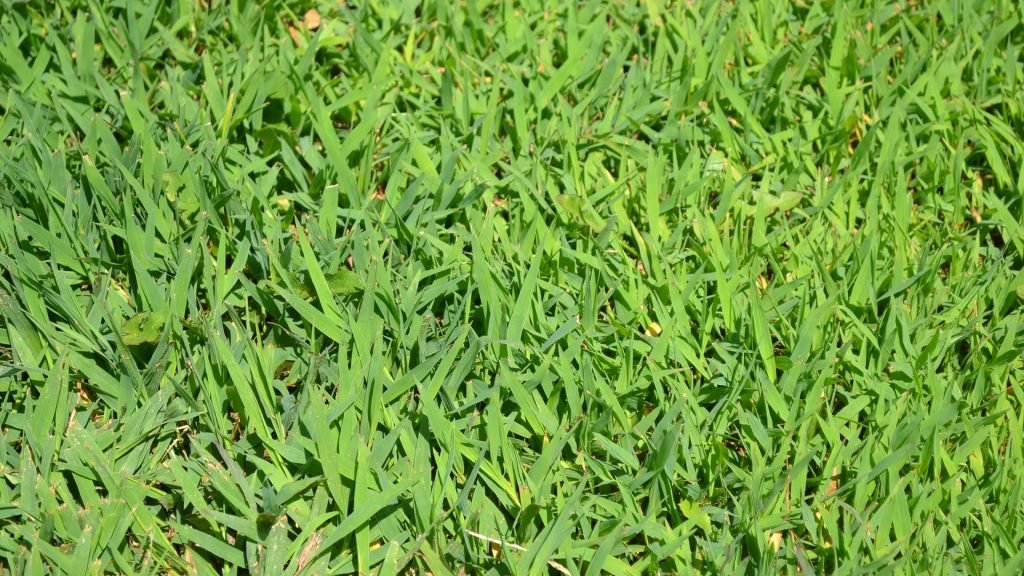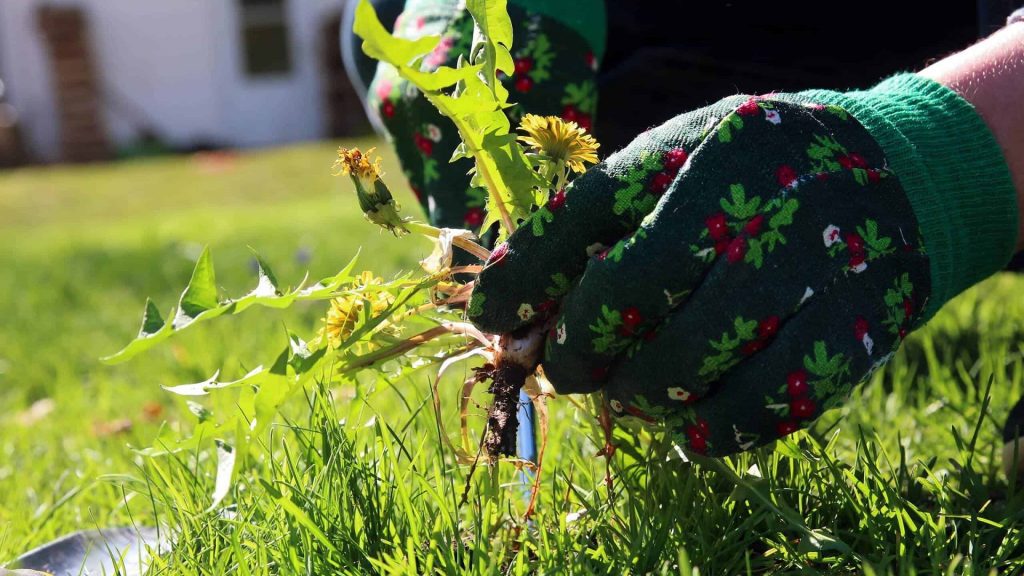
Weed and Feed: How Often is Enough For Your Lawn?
There’s a delicate balance when applying certain products to your lawn, and weed and feed is one that you have to be most cautious of.
Due to the insecticide element of this product, using too much can do serious damage to your lawn, so it’s important to get the timing right.
How often should you weed and feed your lawn? A weed and feed product should be applied no more than two times a year, and sometimes only once will be enough. This is considered a harsher type of lawn care application and it’s possible to apply too much and do irreversible damage to your grass. Weed and feed is beneficial in that it does two jobs in one, but it’s not always going to be the right time to use them.
If you like this multipurpose lawn product and want to ensure you’re doing the best for your grass, check out our guide on when to apply weed and feed the safe way.
What is Weed and Feed?

As the name suggests, weed and feed is a lawn care product that both destroys weeds and feeds the grass. The goal of using such a product is to eliminate the time spent applying a weed killer and a fertilizer separately, so you can do both easily with a single application.
The results are usually immediate and within a few days, you’ll notice the weeds dying and the grass growing stronger.
However, most of the ingredients in weed and feed aren’t selective, so they can potentially kill anything they come into contact with. This includes fungi, earthworms, and bacteria, all of which can be beneficial for your lawn.
Depending on your gardening style and what benefits this type of product offers, it might not be the right fit.
How Safe is Weed and Feed for Your Lawn?
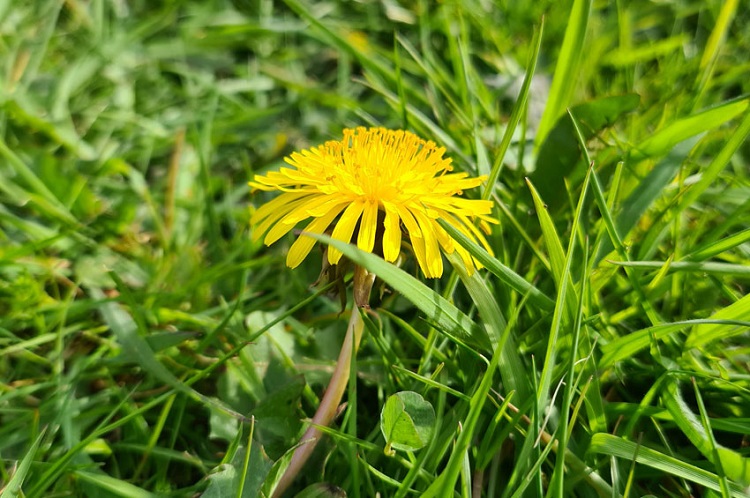
Although seemingly beneficial, there are mixed thoughts about the use of weed and feed products. In some countries, the use of weed and feed products is prohibited, as it’s one of the harsher types of gardening applications out there.
To determine the best weed and feed for your lawn, you should read the manufacturer’s guidelines and the label of the specific product.
There will be recommendations about the correct application, caution that should be taken by pets and children using the lawn, and anything else you need to know to use it safely.
The Best Schedule for Applying Weed and Feed
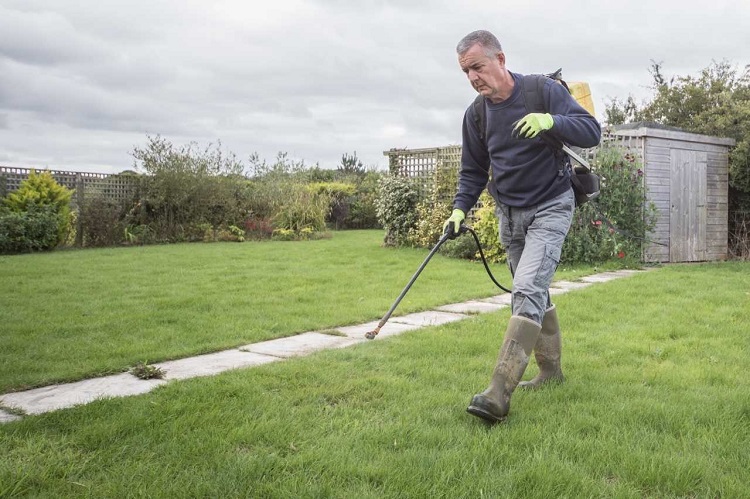
Weed and feed is beneficial under the right circumstances but applying it too often can be disastrous for your lawn. We recommend only using it twice a year if needed, with the first application during April and another in October.
This gives all of the weed varieties a chance to start growing before you treat them.
If weeds aren’t actively growing on your lawn, using a standalone fertilizer will be a better approach. The weed and feed treatment can be harsh, due to the pesticides included in it, so if you can avoid using them, you should.
Weed and Feed Alternatives

If you’d rather steer clear of weed and feed but still want to get rid of the weeds taking over your lawn, these are some natural alternatives:
- Vinegar: Household vinegar has loads of good uses in the garden and killing weeds is one of them. Whether you use it alone or mixed with dish soap to help it stick to the noxious plants, you’ll get results with just one or two applications of vinegar.
- Boiling water: Pouring boiling water directly onto the weeds growing on your lawn is a fast way to kill them. As long as you’re not watering the surrounding grass, you’ll find boiling water to be an effective and natural weed killer.
- Salt: Spraying a salt and water mixture onto the leaves of any weeds on your lawn will absorb any moisture within them and slowly kill them. You should be cautious not to spray salt onto anything made of concrete though, as it can be corrosive.
- Slow-release fertilizers: A slow-release fertilizer is best for your lawn when you want to gradually feed it nutrients. Having a healthier lawn can also reduce the space that weeds have to grow, so if you choose a good one, it can do both jobs at once.
Weeding and Feeding in One Simple Dose
The beauty of a good weed and feed product is that you’re doing two jobs in one, and saving yourself many hours in the garden.
As effective as it may be, you must be sure not to apply a weed and feed too often, otherwise, the harm to your lawn will be much greater than the good it could have done.
Related Questions
Fertilizers and pesticides are just two common lawn applications that homeowners use, with lots of other ways to improve the health of your grass possible.
To find out more about what your lawn needs, read on for some FAQs and expert answers that can give you some inspiration.
Does My Lawn Need Overseeding?
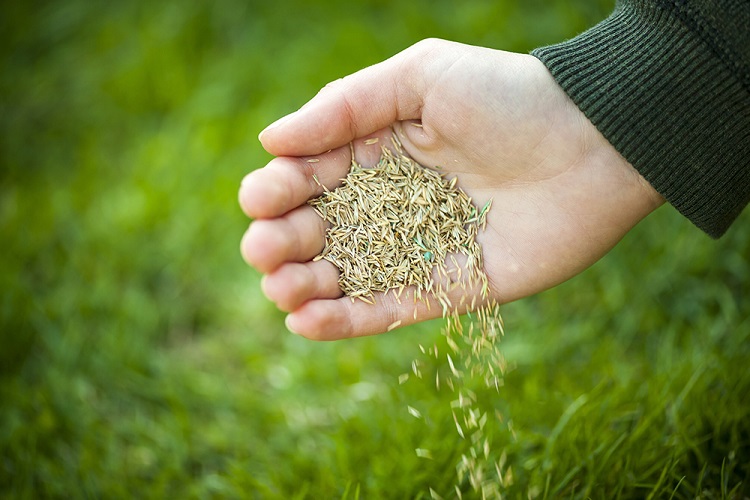
The benefits of overseeding a healthy lawn are that it can help to maintain the green color when weather conditions aren’t ideal, grow stronger roots, and prevent weeds from growing through.
Experts recommend overseeding at least once a year to enjoy all of these benefits and more.
When Should You Aerate a Lawn?
Lawn aeration should be done once a year only or as required, otherwise it can damage the grass.
Some of the usual signs that point to the need for aeration include recent dry conditions, a spongy feeling underneath your feet when you walk on the grass, or if there’s compacted soil that needs to be broken up.
Resources:

